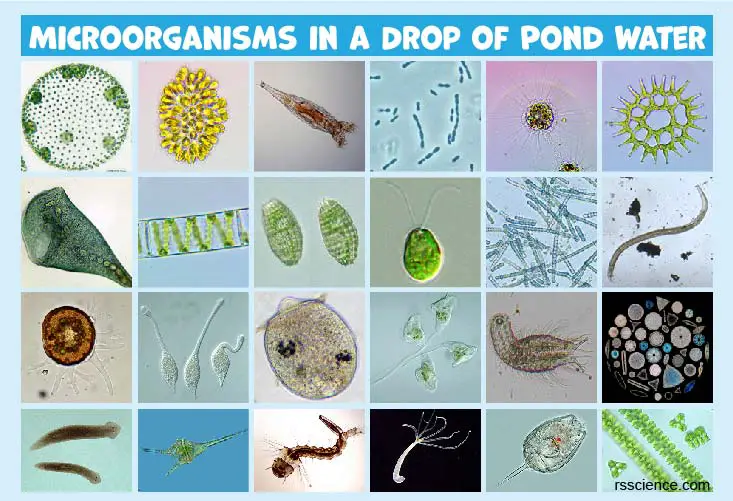Organisms that are only visible with the aid of a microscope are referred to as ___. Microbes are a group of microscopic organisms including bacteria archaea protozoa algae fungi viruses and multicellular animal parasites.
In contrast microorganisms are the microscopic organisms including bacteria archaea protozoa algae fungi viruses and multicellular animal parasites.

. Are all diseases caused by microbes. Bacteria Archaea or Eukaryota. Magnified image being viewed.
4 What term is used to describe organisms that are not capable of making their own food. View Test Prep - Midterm Exam Questionsdocx from MICROBIO 242 at Chamberlain College of Nursing. Which of the following is not a microscopic organism that Leewenhook was able to observe under the.
There is much debate as to whether viruses are living or non-living. 9 Is tree a living. Term used to describe a material that can be hammered or rolled into shape.
Examples of microorganisms include bacteria archaea algae protozoa and microscopic animals such as the dust mite. However it includes other types of microorganisms as well. Gold must be used when preparing the slides for reflection of the light.
MalleableSee Web Links for a definitionDuctile is a similar word. Anything that is not microscopic. Pleomorphism is a term used to describe cell morphology when there is a variety of sizes.
A term used to describe diseases under constant surveillance is re-emerging. 3 Do organisms always stay in same level. In contrast bacteria are a type of unicellular prokaryotic microbes.
They can be either prokaryotes or eukaryotes and either unicellular or multicellular. Recent research has shown that as the climate warms phytoplankton growth rates go down. But seriously there is no formal definition different people use it differently.
7 How many organisms are in a tree. An ___ cell will not contain organelles such as mitochondria or a nucleus. Viruses do not perform all seven life processes so they are not included in one of the five kingdoms.
Phytoplankton is a term used to describe microscopic plants living in the upper sunlit layer of the ocean. The possible existence of unseen microbial life was suspected from ancient times such as in Jain scriptures from sixth century BC India. A microorganism is a living thing that is too small to be seen with the naked eye.
___ are small single-celled prokaryotic organisms. No microbes are a general term for microscopic organisms like mold or bacteria. In the three-domain system one of three taxa at that rank.
D Light microscopes use light energy either natural or artificial to create the. These microorganisms have been often under-appreciated and under-studied. Indeed until Anton von Leeuwenhoek invented.
C Light microscopes cannot be used to view living organisms. Microbes are microscopic organisms mainly including bacteria that are responsible for causing disease or fermentation. Electron microscopes use electrons not.
The scientific study of microorganisms began with their observation under the microscope in the 1670s by Anton van Leeuwenhoek. October 1 2018 Posted by Madhu. 5 What do the organisms in each trophic level eat quizlet.
Learning Objectives Recognize the methods used to measure microbial growth. In the 1850s Louis P. How might this affect photosynthesis and carbon dioxide levels.
Bacteria and viruses are microscopic but some protozoans and algae are visible to the naked eye. Many types of green algae are not microscopic but they are often studied by microbiologists. Units of Measurement for Microbes Measuring microbes presents challenges because they are very small requiring indirect measures of microbes to understand them better.
However these worms fall within the field of microbiology because diseases caused by helminths involve microscopic eggs and larvae. 2 What is the organism of a tree. Which of the following is NOT a term used to describe microscopic organisms.
It is not considered a formal taxonomic term because the organisms it describes do not have a shared evolutionary origin. These tiny plants are responsible for much of the photosynthesis that takes place on Earth. The word protist is a historical term that is now used informally to refer to a diverse group of microscopic eukaryotic organisms.
Answer 1 of 2. Both are commonly applied to describe metals. An organism that is too small to be seen by the unaided eye especially a single-celled organism such as a bacterium.
You could say anything larger than a few microns is macroscopic but then that is a subjective definition to the. Microorganisms include viruses bacteria protists and some types of fungi although many fungi can be seen without the use of a microscope. Also helminths easily viewed by the naked eye in their adult forms are studied in microbiology because they have microscopic forms in their life cycles.
A microorganism or microbe is an organism of microscopic size which may exist in its single-celled form or as a colony of cells. The key difference between macroscopic and microscopic is that the term macroscopic refers to substances that are visible to naked eye whereas the term microscopic refers to substances that are invisible to the naked eye. 6 Are all algae aquatic.
Multicellular parasitic worms called helminths are not technically microorganisms as most are large enough to see without a microscope. The terms macroscopic and microscopic refers to two different scales that are useful in determining the. 8 What are the 4 types of organisms.

Solved Microscopic Organisms Such As Bacteria Yeast And Chegg Com

Solved Microscopic Organisms Such As Bacteria Yeast And Chegg Com


0 Comments